Business process improvement can be a painful, well, process.
Senior management won’t take responsibility, department managers are overwhelmed, and everyone else’s eyes glaze over when you utter the phrase, “business process management.” Everyone loves workflows. Kanban boards are so popular these days because they make team collaboration simple and even fun.
BPM, however, sounds like boring business jargon — but what does it mean? Well, it’s kind of like conducting an orchestra.
For the music to sound good, each instrument has to play the right notes, at the right time, in the right order. The sheet music tells the musicians what to play, and the conductor coordinates. If your business is an orchestra, a business process management tool is the music and the conductor.
This article will explain what BPM tools are for, recommend features to look for in BPM software, and give you an overview of the best BPM software solution.
What are BPM tools used for?
BPM tools allow businesses to model, implement, analyze, and improve business processes.
They’ve been growing in popularity in recent years, thanks to their ability to help companies increase operational efficiency and productivity.
They can save time and money for your business by:
- Automating processes and workflows
- Reducing human error
- Documenting business processes
- Improving communication and coordination
BPM software can help you with:
- Process design
- Process mapping
- Process automation
- Simplifying complex processes — which is especially useful for enterprises
- Workflow automation
- And much more
But you may be wondering what is the difference between business process management software and workflow software?
A Workflow is a component of business process management, so workflow software can help you manage specific projects and workflows.
BPM software goes beyond the workflow to optimize all the processes, technology, and infrastructure which allow multiple workflows to operate together.
To understand this difference, think about how Amazon works.
It seems simple: a couple of clicks, and within a few days — or sometimes hours — your package arrives at your home. Of course there’s a workflow involved: the item has to be taken from the warehouse, packaged, addressed, given to the delivery driver, and delivered to your house.
To do all this seamlessly, they need to manage critical business processes that go beyond individual workflows. So they use a BPM solution — a platform that ensure millions of packages reach their destination every day without a hitch.
Who should use BPM software?
The simple answer is that BPM software can help businesses of any size in any industry improve their business processes.
In fact, 70% of organizations report using at least one BPM software tool, and those that don’t yet are planning to start within the next 3-12 months.
In Florida, for example, Alachua County‘s Fire Rescue Department started using monday.com as a business process management suite during their COVID-19 emergency response. They needed a BPM platform that could centralize management of both ongoing day-to-day work (i.e., business processes) and emergency responses (i.e., workflows).
Here’s an overview of their ongoing business processes:
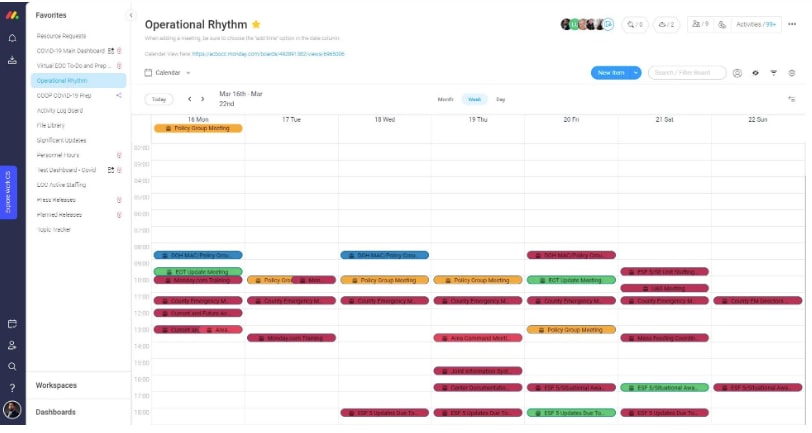
You can also review the dashboard they used for the emergency response workflow.
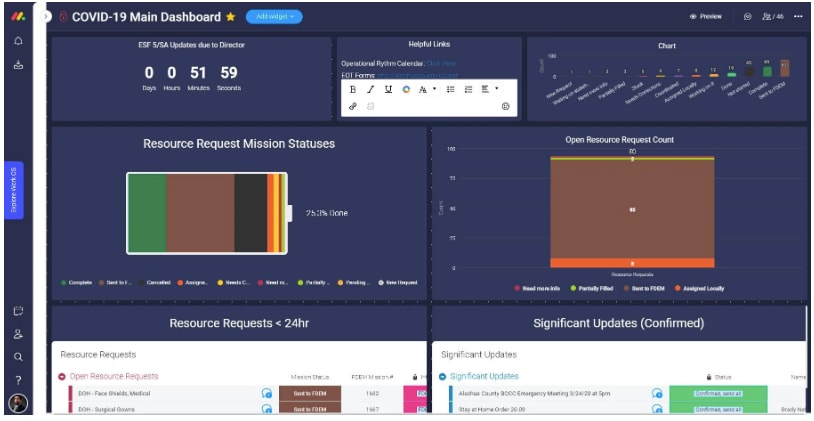
With monday.com, Alachua County found a business process management suite that incorporates workflow management features, enabling them to streamline their processes and respond more efficiently to the emergency.
What are the benefits of BPM software?
Put simply, a BPM suite allows you to make continuous improvements to your BPM strategy. Following a BPM process helps you spot weaknesses within your business while implementing and monitoring new processes.In fact, 75% of organizations say BPM software has helped them improve performance and achieve their growth goals.
For enterprises managing multiple teams and projects, BPM tools are essential for minimizing costs and maximizing efficiency.
Automation of repetitive, menial tasks can free employees up to focus on their core work, leading to fewer mistakes, greater employee satisfaction, and increased productivity.
For small business owners, BPM tools are key to scaling their business, since they provide business owners and their teams more time to concentrate on the work that really matters.
What are the core features of BPM software?
BPM software can increase the operational efficiency of businesses of any size and in any industry.
So, now that you’re on board with BPM software, here are 7 core features to look out for when choosing a business process management tool.
1. Business process modeling and designing
Of course, when choosing BPM software, you need to make sure it has business process model designing features.
BPM process modeler software — such as, ahem, monday.com — allows you to discover, model, implement, analyze, and improve business processes.
Check out our business process management templates to find out more.

2. Data and analytics
Speaking of analyzing and improving your BPM strategy, that wouldn’t be possible without data and analytics.
monday.com has multiple dashboards that allow you to easily see what’s working and what’s not.
Here’s an example of a monday.com KPI dashboard:
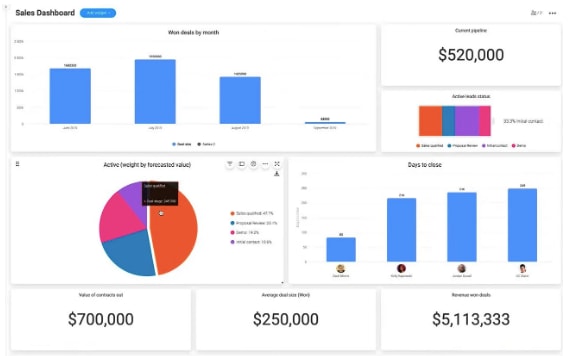
3. Process automation
Repetitive tasks take up an employee’s time and increase the margin for error when done by hand. Every department has processes that can be automated.
Finance departments process invoices. HR departments process employee documentation. Logistics departments process stock.
These are just a few examples of processes that can be automated using BPM software.
Below, you can see what an automated process could look like on monday.com.
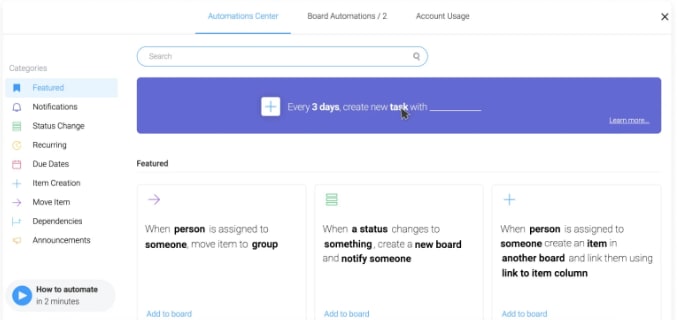
4. Collaboration
Since workflow management is a component of BPM, it’s best to look for BPM software with in-built collaboration features such as team task management.
monday.com’s multiple task board views allow you to easily manage multiple workflows and help them, well…flow.
The following image is an example of a multiple workflow view on monday.com.
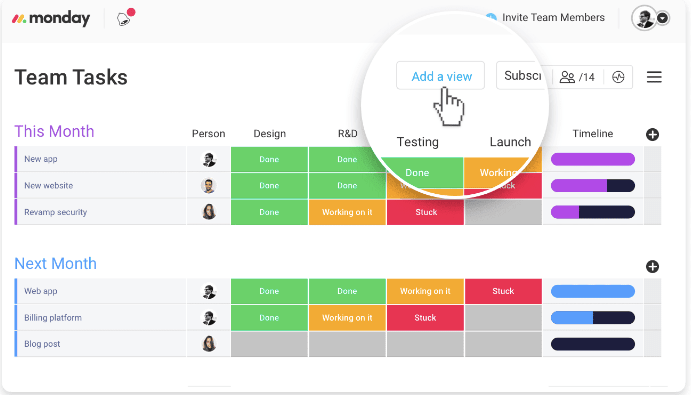
5. Communication
An integrated BPM tool should include features that centralize communication across teams — so you can say “adios” to irrelevant “Reply All” emails clogging up your inbox!
monday.com lets your team communicate through comments, discussions, mentions, and notifications, as seen below.
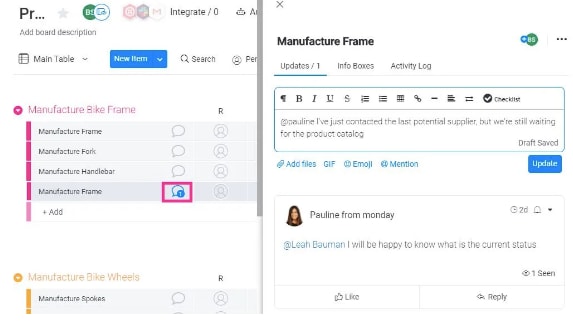
It also has email integrations, such as Outlook and Gmail, which allow you to centralize all your organization’s correspondence in one place.
6. Integrations
You should also look for business process management software that offers integrations with the software your company already uses — think email, file sharing, communication, etc.
For example, with monday.com, you can send Slack updates based on changes in monday.com and create tasks in monday.com workflows directly from Slack messages.
monday.com also integrates with file sharing apps such as Box and Dropbox, making it easier to document and access your business processes.
7. Mobile and remote access
With remote work now the norm for many businesses, you will need a BPM software that supports remote access and can be used across all your devices.
monday.com is compatible with iOS and Android, meaning you can access your BPM tools from anywhere, anytime.
What are the best BPM tools?
We may be biased, but we think monday.com ticks all the boxes as a BPM software solution, no matter your business size or industry.
Not only does it have the business process model and designing features that are essential for carrying out BPM processes, but it also comes with done-for-you business process management templates that save you time and hassle.
It also allows you to track the changes you make to your business processes, so you can see what works and modify what doesn’t.
monday.com’s data and analytics features give you the bigger picture across teams and projects.
Here’s an example of a projects overview dashboard.
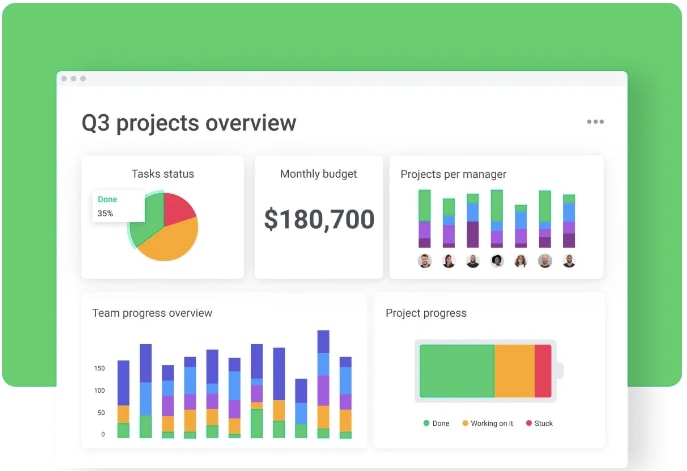
monday.com also offers individual and multiple workflow management, making it perfect for both small teams and enterprises managing multiple departments and complex processes.
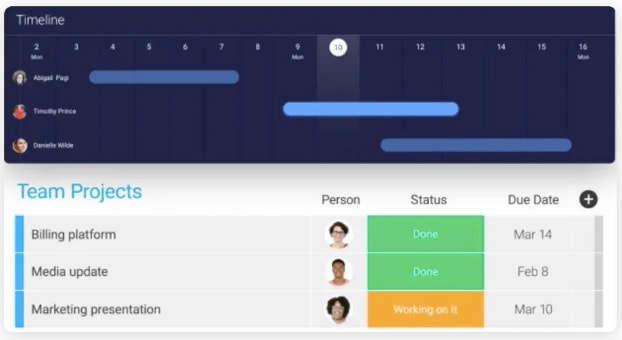
And with monday.com’s multiple view options, viewing and managing your business processes has never been easier.
We have Gantt charts, calendar views, KPI dashboards, timelines, charts, and much more, so if you’re a visual person, you’ll love monday.com.
Here’s a sneak peek at our Views Center.
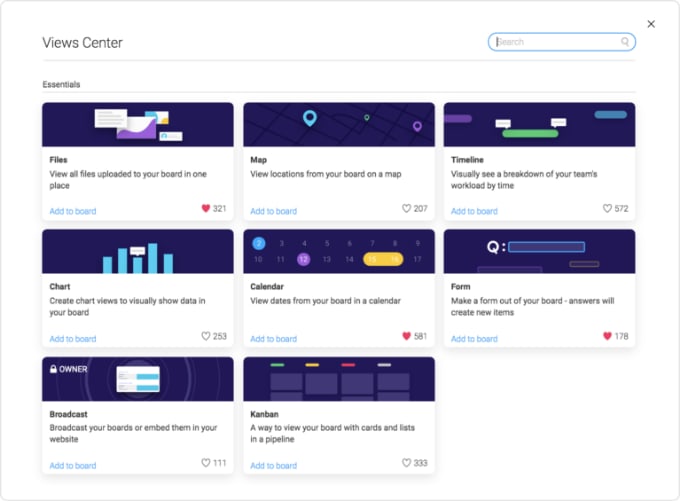
monday.com’s automated workflows reduce costs, increase efficiency, and boost employee satisfaction, helping you make your business run like a well-oiled machine.
Plus, our collaboration, communication, and file sharing features make it easy to manage multiple teams and projects.
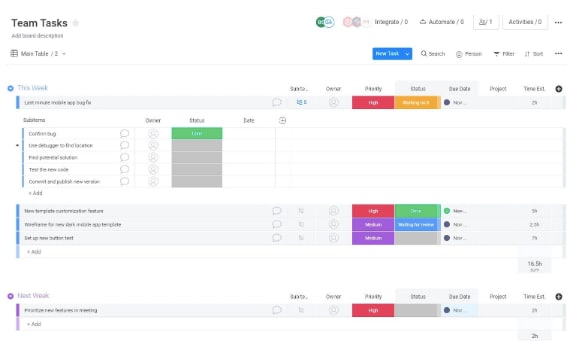
monday.com also has integrations with the software your company already uses, making the transition to BPM a seamless process. Plus, you can manage your BPM strategy from anywhere in the world with remote and mobile access.
Of course, it’s up to you to decide which business process management tool is best for your business — but we think monday.com is a strong contender.
BPM tools help you make beautiful music
Business process management is a lot like conducting an orchestra — and with the right BPM software, you can compose symphonies as well as play them. We personally think monday.com is the perfect conductor for orchestras of any size.
But don’t just take our word for it — sign up for our free trial, or check out our business process management template.

